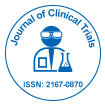
Journal of Clinical Trials
Open Access
ISSN: 2167-0870

ISSN: 2167-0870
Shaniko Kaleci*, Pierantonio Bellini, Giacomo Setti, Giulia Melloni, Matilde Ruozzi and Ugo Consolo
Background: The extraction of impacted third molars presents anatomical challenges and surgical risks, prompting debate over prophylactic removal, particularly for impacted lower molars.
Types of studies reviewed: This meta-analysis was conducted according to PRISMA guidelines, included studies from 2000 to 2024. This meta-analysis examined the relationship between the mesioangular position of impacted third molars and pathological changes, including bone loss adjacent to the second molar.
Results: 2943 studies initially identified, 10 studies (2163 patients) met the inclusion criteria, 4 studies included in the meta-analysis. Statistical analysis revealed that horizontally impacted third molars showed a higher percentage of pathological change (41%) compared to vertically (20.7%), mesioangular (21.4%) and distoangular (9.7%) molars. Additionally, cystic degeneration and bone loss distal to the second molar were frequently observed, with increased incidence in patients aged 20-25. Significant heterogeneity among studies was noted and a need for consistent monitoring of impacted third molars was recommended.
Practical implications: The findings suggest that impacted third molars, even when asymptomatic, pose a risk for adjacent structures and warrant careful evaluation. Routine imaging and close monitoring of follicular and bone changes may enhance preventive care, particularly for horizontally impacted third molars with higher rates of pathological changes.
Published Date: 2024-12-20; Received Date: 2024-11-19